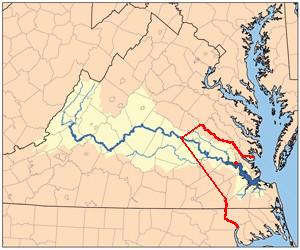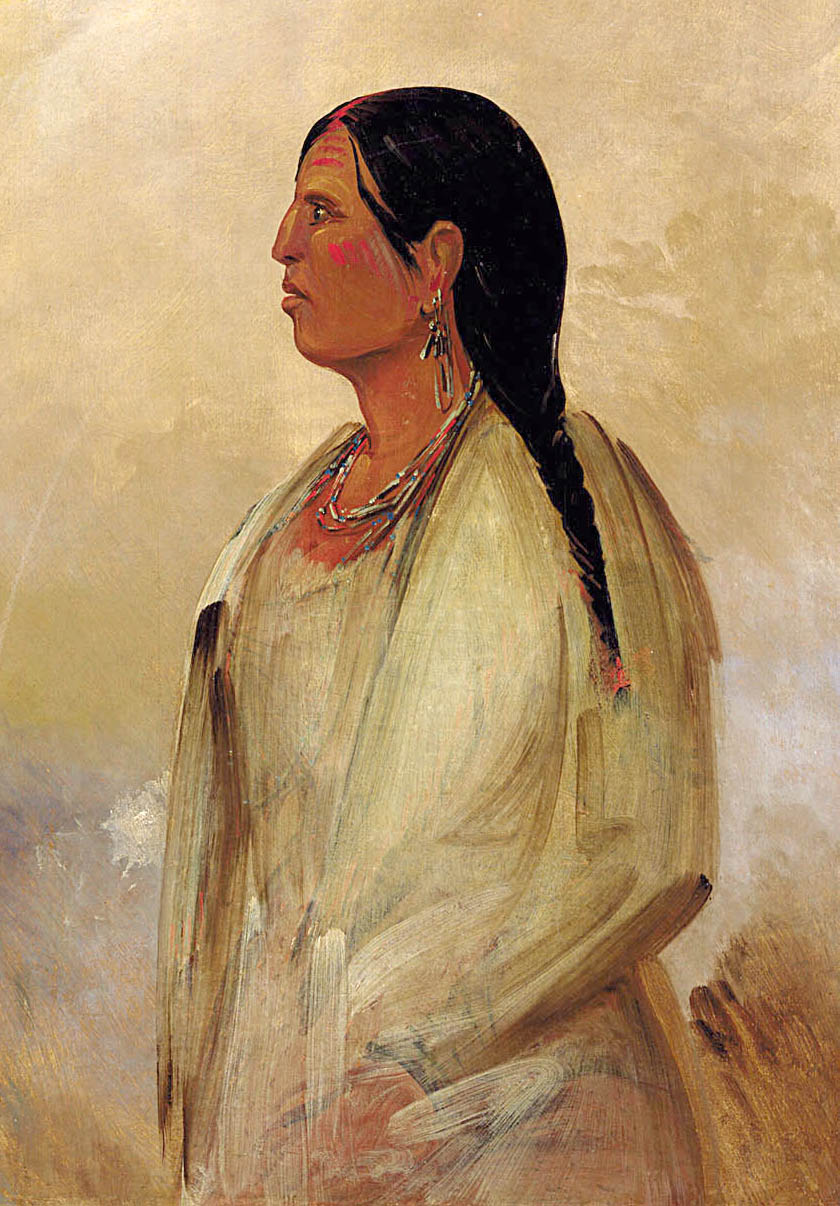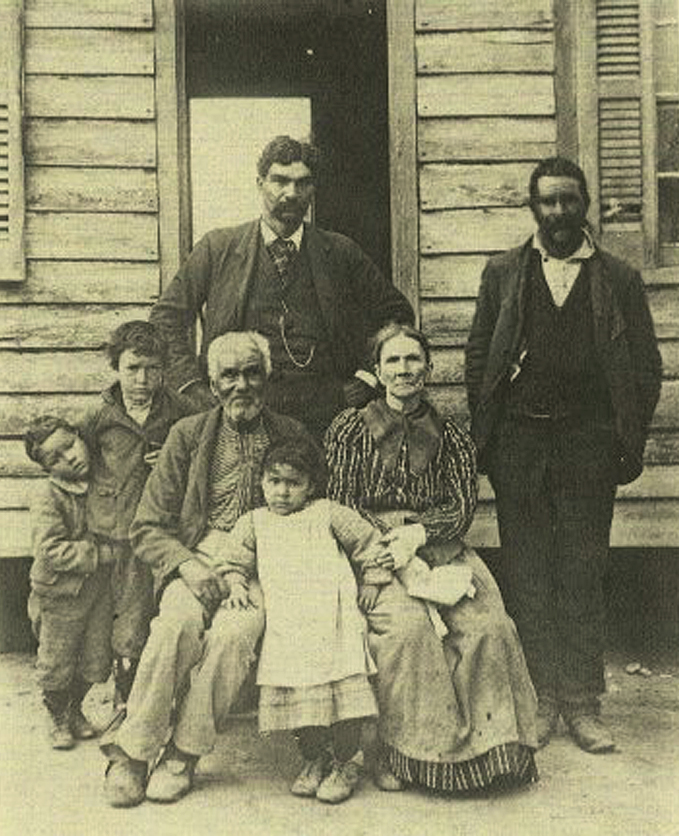|
Weanoc
The Weyanoke people ( ) were an Indigenous people of the Northeastern Woodlands. Name Their name is also spelled Weyanock,Rountree, ''The Powhatan Indians of Virginia'', 9. as British colonist John Smith recorded on his map.Rountree, ''The Powhatan Indians of Virginia'', 154. Alternative spellings include Weanoc, Weanock, Winauh, Winauk, Wynauh, and Wynauk. Their name may mean "at the bend" of a river, coming from either the Eastern Niantic or Nipmuck language. Territory Their lands were located along the James RiverHodge, ''Handbook of North American Indians'', 926. and west of the mouth of Appomattox River, near present-day Weyanoke, Virginia. Their main capital settlement was at Weyanoke Point in Charles City County, Virginia. Their second primary settlement was at the head of Powell's Creek in Prince George County, Virginia. History At the beginning of the 17th century, when the tribe had early contact with English colonists, the Weynock traded with Wahunsenacaw ... [...More Info...] [...Related Items...] OR: [Wikipedia] [Google] [Baidu] |
Powhatan Confederacy
Powhatan people () are Indigenous peoples of the Northeastern Woodlands who belong to member tribes of the Powhatan Confederacy, or Tsenacommacah. They are Algonquian peoples whose historic territories were in eastern Virginia. Their Powhatan language is an Eastern Algonquian language, also known as Virginia Algonquian. In 1607, an estimated 14,000 to 21,000 Powhatan people lived in eastern Virginia when English colonists established Jamestown. The term ''Powhatan'' is also a title among the Powhatan people. English colonial historians often used this meaning of the term.Sandra F. Waugaman and Danielle Moretti-Langholtz. ''We're Still Here: Contemporary Virginia Indians Tell Their Stories''. Richmond: Palari Publishing, 2006 (revised edition). In the late 16th and early 17th centuries, a ''mamanatowick'' (paramount chief) named Wahunsenacawh forged a Paramount Chiefdom consisting of 30 tributary tribes through inheritance, marriage and war, whose territory included mu ... [...More Info...] [...Related Items...] OR: [Wikipedia] [Google] [Baidu] |
Powhatan
Powhatan people () are Indigenous peoples of the Northeastern Woodlands who belong to member tribes of the Powhatan Confederacy, or Tsenacommacah. They are Algonquian peoples whose historic territories were in eastern Virginia. Their Powhatan language is an Eastern Algonquian language, also known as Virginia Algonquian. In 1607, an estimated 14,000 to 21,000 Powhatan people lived in eastern Virginia when English colonists established Jamestown. The term ''Powhatan'' is also a title among the Powhatan people. English colonial historians often used this meaning of the term.Sandra F. Waugaman and Danielle Moretti-Langholtz. ''We're Still Here: Contemporary Virginia Indians Tell Their Stories''. Richmond: Palari Publishing, 2006 (revised edition). In the late 16th and early 17th centuries, a ''mamanatowick'' (paramount chief) named Wahunsenacawh forged a Paramount Chiefdom consisting of 30 tributary tribes through inheritance, marriage and war, whose territory included m ... [...More Info...] [...Related Items...] OR: [Wikipedia] [Google] [Baidu] |
Powell's Creek (James River Tributary)
Powell's Creek is a tributary of the James River on the south side of the James River in Prince George County, Virginia, United States. The creek borders James River National Wildlife Refuge near Garysville, Virginia. History In 1730, a tobacco inspection site was located here. According to the Tobacco Inspection Act, the inspection was "In Prince George County, Virginia, Prince George; at Appamatox Point, upon Robert Bolling, Col. Bolling's land; on Col. Robert Mumford's land; and Powel's Creek; upon Richard Bland (burgess), Mr. Bland's land, under one inspection." According to a State of Virginia historical marker, "The creek ... was named for Nathaniel Powell, acting governor in 1619. Weanoc, Weyanoke Indian town was here. Nearby was the site of an old mill, known in the American Revolutionary War, Revolution as Bland's, and later, Cocke's Mill. The British William Phillips (British Army officer), General Phillips passed in May 1781. Ulysses S. Grant's army, after crossin ... [...More Info...] [...Related Items...] OR: [Wikipedia] [Google] [Baidu] |
Wahunsenacawh
Powhatan (), whose proper name was Wahunsenacawh (alternately spelled Wahunsenacah, Wahunsunacock, or Wahunsonacock), was the leader of the Powhatan, an alliance of Algonquian-speaking Native Americans living in Tsenacommacah, in the Tidewater region of Virginia at the time when English settlers landed at Jamestown in 1607. Powhatan, alternately called "King" or "Chief" Powhatan by English settlers, led the main political and military power facing the early colonists, and was probably the older brother of Opechancanough, who led attacks against the settlers in 1622 and 1644. He was the father of Matoaka (Pocahontas). Name In 1607, the English colonists were introduced to Wahunsenacawh as Powhatan and understood this latter name to come from Powhatan's hometown near the falls of the James River near present-day Richmond, Virginia. Seventeenth-century English spellings were not standardized, and representations were many of the sounds of the Algonquian language spoken by ... [...More Info...] [...Related Items...] OR: [Wikipedia] [Google] [Baidu] |
Treaty Of Middle Plantation
The Treaty of 1677 (also known as the Treaty Between Virginia And The Indians 1677 or Treaty of Middle Plantation) was signed in Virginia on May 28, 1677, between the English Crown and representatives from Native American tribes in Virginia, including the Nottoway, the Appomattoc, the Wayonaoake, the Nansemond, the Nanzatico, the Monacan, the Saponi, and the Meherrin following the end of Bacon's Rebellion. The treaty designated those that signed as "tributary tribes", which signified that they were guaranteed control over their traditional homelands, hunting and fishing rights, the right to keep and bear arms, and other rights so long as they maintained their loyalty towards the English Crown. The twenty-one articles of the treaty were confirmed when the English sent gifts to the chiefs along with various badges of authority. The Queen of Pamunkey, known as Cockacoeske to the English, received a red velvet cap which was fastened with a silver frontlet and silver chains. Wit ... [...More Info...] [...Related Items...] OR: [Wikipedia] [Google] [Baidu] |
Charles City County, Virginia
Charles City County is a county (United States), county located in the Commonwealth (U.S. state), U.S. commonwealth of Virginia. The county is situated southeast of Richmond, Virginia, Richmond and west of Jamestown, Virginia, Jamestown. It is bounded on the south by the James River (Virginia), James River and on the east by the Chickahominy River. The area that would become Charles City County was first established as "Charles Cittie" by the Virginia Company in 1619. It was one of the first four "boroughs" of Virginia, and was named in honor of Prince Charles, who would later become King Charles I of England. After Virginia became a royal colony, the borough was changed to "Charles City Shire" in 1634, as one of the five original Shires of Virginia. It acquired the present name of Charles City County in 1643. In the 21st century, Charles City County is part of the Greater Richmond Region of the state of Virginia. As of the 2020 United States census, 2020 census, the county po ... [...More Info...] [...Related Items...] OR: [Wikipedia] [Google] [Baidu] |
Indigenous Peoples Of The Southeastern Woodlands
Indigenous peoples of the Southeastern Woodlands, Southeastern cultures, or Southeast Indians are an ethnographic classification for Native Americans who have traditionally inhabited the area now part of the Southeastern United States and the northeastern border of Mexico, that share common cultural traits. This classification is a part of the Eastern Woodlands. The concept of a southeastern cultural region was developed by anthropologists, beginning with Otis Mason and Franz Boas in 1887. The boundaries of the region are defined more by shared cultural traits than by geographic distinctions.Jackson and Fogelson 3 Because the cultures gradually instead of abruptly shift into Plains, Prairie, or Northeastern Woodlands cultures, scholars do not always agree on the exact limits of the Southeastern Woodland culture region. Shawnee, Powhatan, Waco, Tawakoni, Tonkawa, Karankawa, Quapaw, and Mosopelea are usually seen as marginally southeastern and their traditional lands represen ... [...More Info...] [...Related Items...] OR: [Wikipedia] [Google] [Baidu] |
Extinct Native American Tribes
Extinction is the termination of an organism by the death of its last member. A taxon may become functionally extinct before the death of its last member if it loses the capacity to reproduce and recover. As a species' potential range may be very large, determining this moment is difficult, and is usually done retrospectively. This difficulty leads to phenomena such as Lazarus taxa, where a species presumed extinct abruptly "reappears" (typically in the fossil record) after a period of apparent absence. Over five billion species are estimated to have died out. It is estimated that there are currently around 8.7 million species of eukaryotes globally, possibly many times more if microorganisms are included. Notable extinct animal species include non-avian dinosaurs, saber-toothed cats, and mammoths. Through evolution, species arise through the process of speciation. Species become extinct when they are no longer able to survive in changing conditions or against superio ... [...More Info...] [...Related Items...] OR: [Wikipedia] [Google] [Baidu] |
Eastern Algonquian Peoples
Eastern or Easterns may refer to: Transportation Airlines *China Eastern Airlines, a current Chinese airline based in Shanghai * Eastern Air, former name of Zambia Skyways *Eastern Air Lines, a defunct American airline that operated from 1926 to 1991 * Eastern Air Lines (2015), an American airline that began operations in 2015 *Eastern Airlines, LLC, previously Dynamic International Airways, a U.S. airline founded in 2010 * Eastern Airways, an English/British regional airline *Eastern Provincial Airways, a defunct Canadian airline that operated from 1949 to 1986 Roads *Eastern Avenue (other), various roads *Eastern Parkway (other), various parkways * Eastern Freeway, Melbourne, Australia * Eastern Freeway Mumbai, Mumbai, India Other *Eastern Railway (other), various railroads *, a cargo liner in service 1946-65 Education *Eastern University (other) *Eastern College (other) Sports * Easterns (cricket team), South African ... [...More Info...] [...Related Items...] OR: [Wikipedia] [Google] [Baidu] |
Nottoway River
The Nottoway River is a river in the U.S. State of Virginia and northeastern North Carolina that is in length. The river begins in Prince Edward County and merges with the Blackwater River to form the Chowan River in North Carolina. The river is part of the Chowan River system, which empties into the Albemarle Sound in North Carolina. Course The Nottoway River rises in a dense forest outside of Scholfield, an unincorporated community in Prince Edward County. The Nottoway serves as the boundary of Prince Edward and Lunenburg counties, then Nottoway and Lunenburg counties. The river serves as the boundaries for other counties such as Brunswick, Dinwiddie, Sussex, where it makes a northeastern jump, and Greensville County. The river courses southeast into Southampton County. The Nottoway River reaches North Carolina south of Franklin, Virginia. The river briefly enters North Carolina for ending at the confluence of the Blackwater & Nottoway rivers, creating the Chowa ... [...More Info...] [...Related Items...] OR: [Wikipedia] [Google] [Baidu] |
Nansemond
The Nansemond are the Indigenous people of the Nansemond River, a 20-mile-long tributary of the James River in Virginia. Nansemond people lived in settlements on both sides of the Nansemond River where they fished (with the name "Nansemond" meaning "fishing point" in Algonquian), harvested oysters, hunted, and farmed in fertile soil. Today, Nansemond people belong to the federally recognized Nansemond Indian Nation. Gradually pushed off their lands in the colonial and following periods, the Nansemond struggled to maintain their culture. They reorganized in the late 20th century and gained state recognition from Virginia in 1985. They gained federal recognition in 2018 after Congress passed a bill. Many members of the tribe still live on former ancestral lands in Suffolk, Chesapeake, and surrounding cities. Language The Nansemond language is believed to have been Algonquian, similar to that of many other Atlantic coastal tribes. But only six words have been preserved, which ... [...More Info...] [...Related Items...] OR: [Wikipedia] [Google] [Baidu] |
Virginia Colony
The Colony of Virginia was a British colonial settlement in North America from 1606 to 1776. The first effort to create an English settlement in the area was chartered in 1584 and established in 1585; the resulting Roanoke Colony lasted for three attempts totaling six years. In 1590, the colony was abandoned. But nearly 20 years later, the colony was re-settled at Jamestown, not far north of the original site. A second charter was issued in 1606 and settled in 1607, becoming the first enduring English colony in North America. It followed failed attempts at settlement on Newfoundland by Sir Humphrey GilbertGilbert (Saunders Family), Sir Humphrey" (history), ''Dictionary of Canadian Biography'' Online, University of Toronto, May 2, 2005 in 1583 and the Roanoke Colony (in modern eastern North Carolina) by Sir Walter Raleigh in the late 1580s. The founder of the Jamestown colony was the Virginia Company, chartered by King James I, with its first two settlements being in Jame ... [...More Info...] [...Related Items...] OR: [Wikipedia] [Google] [Baidu] |







